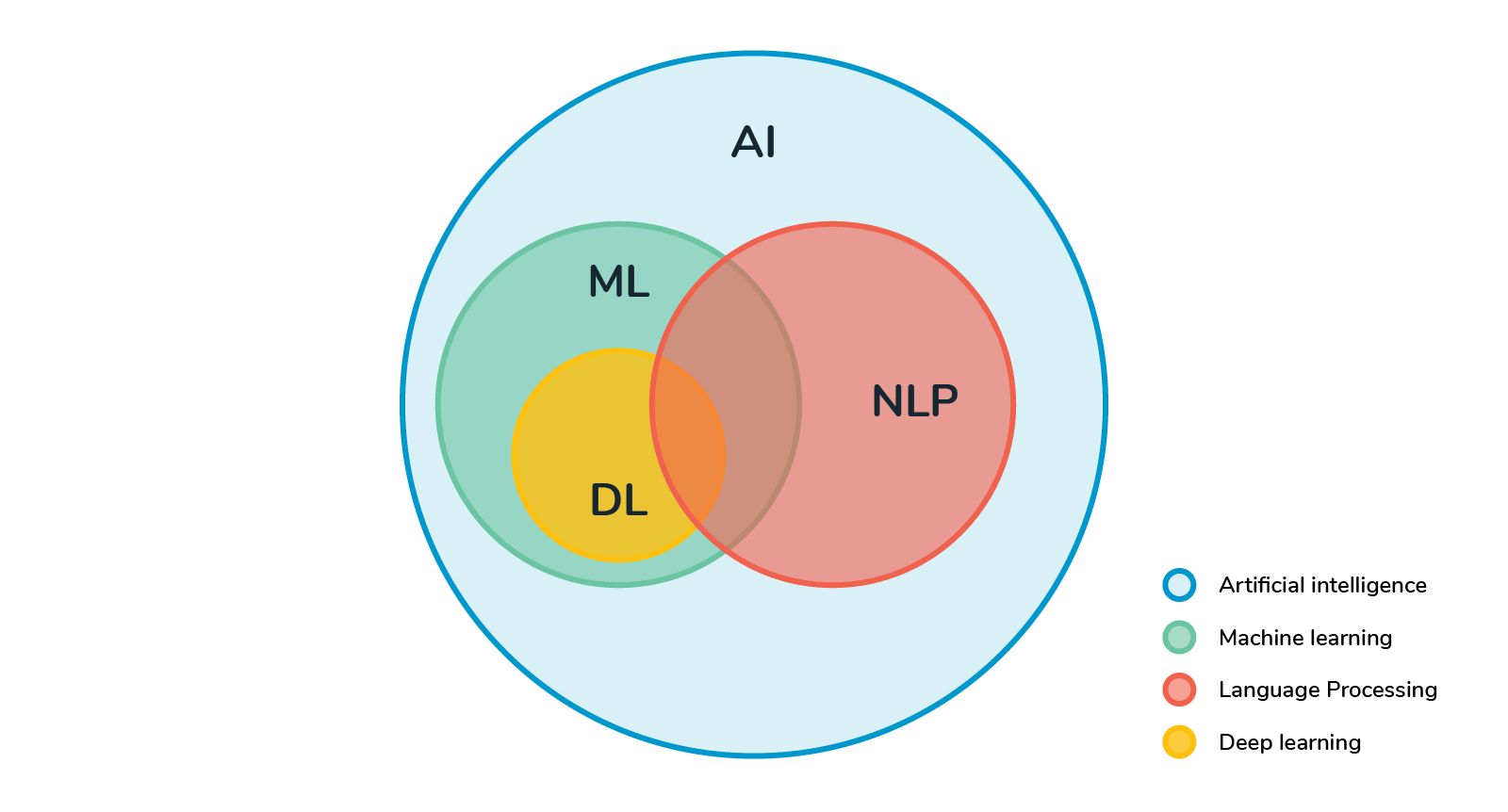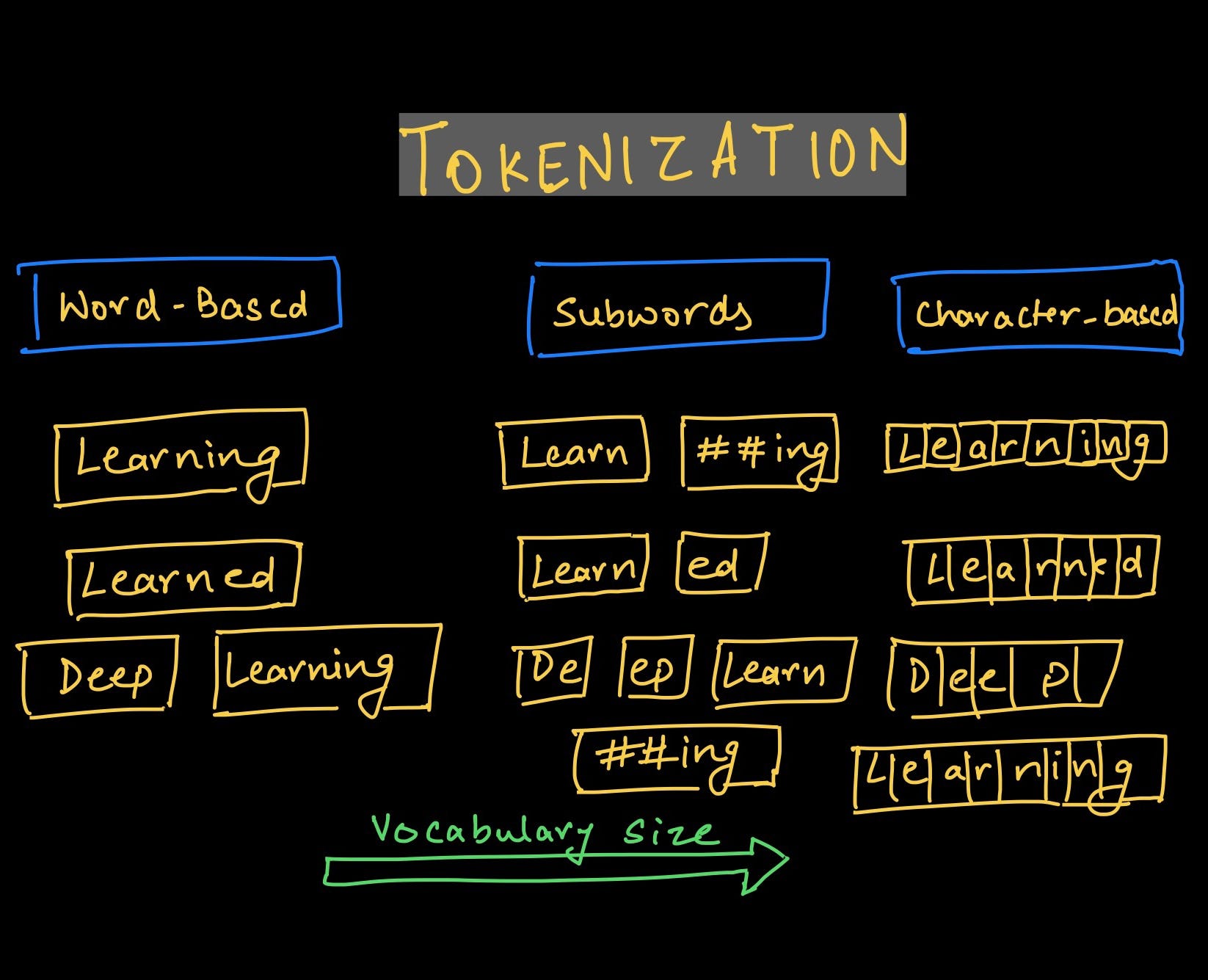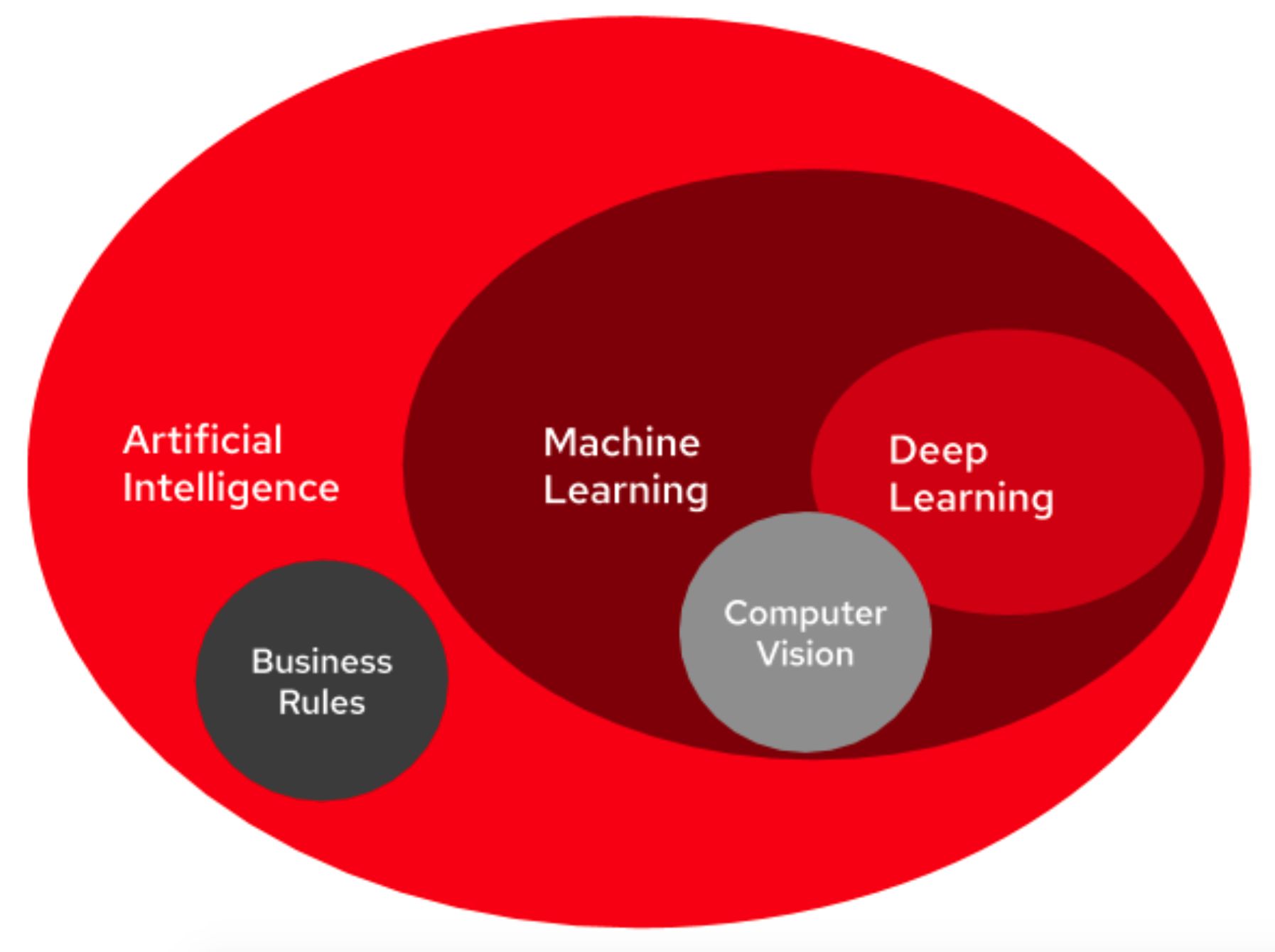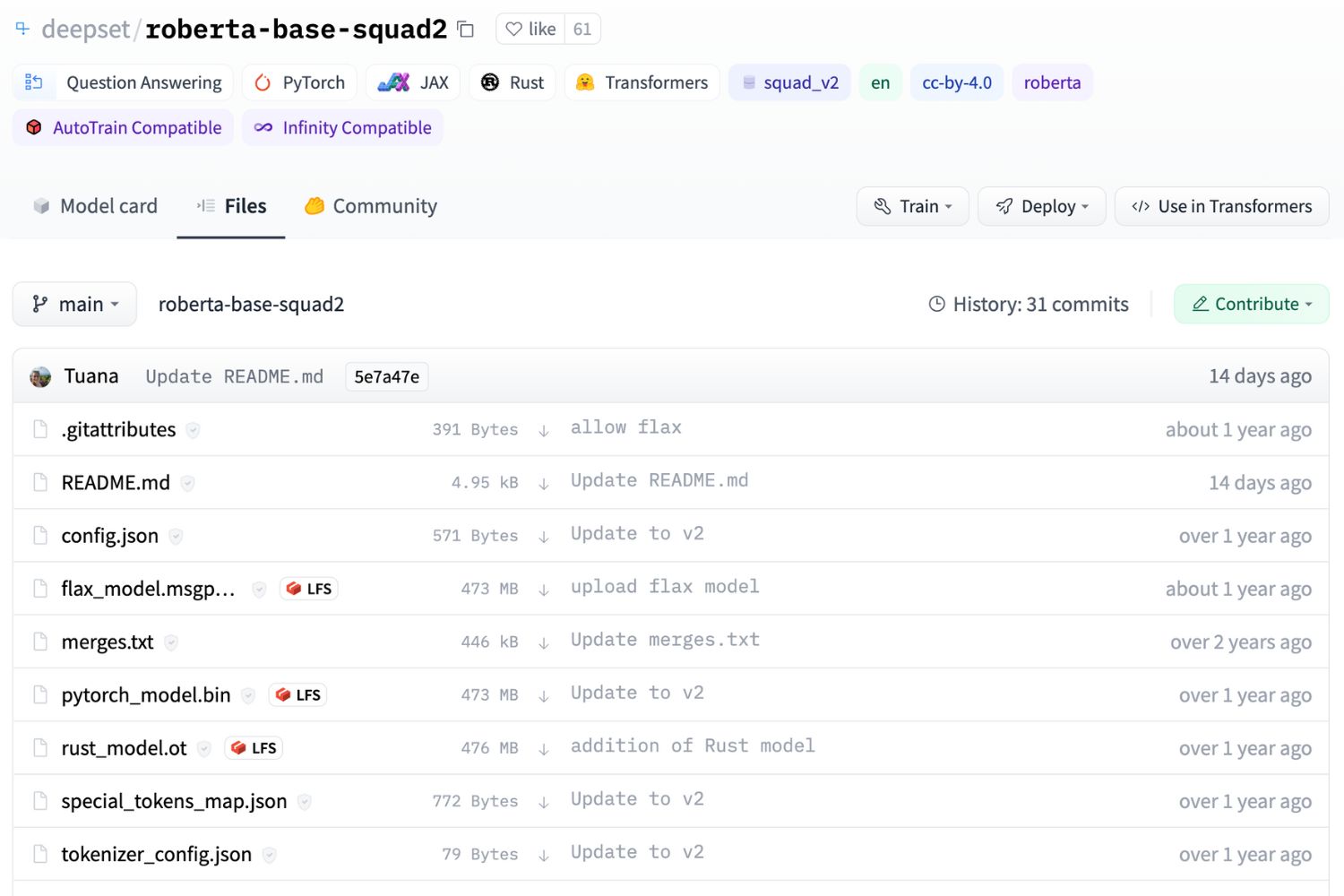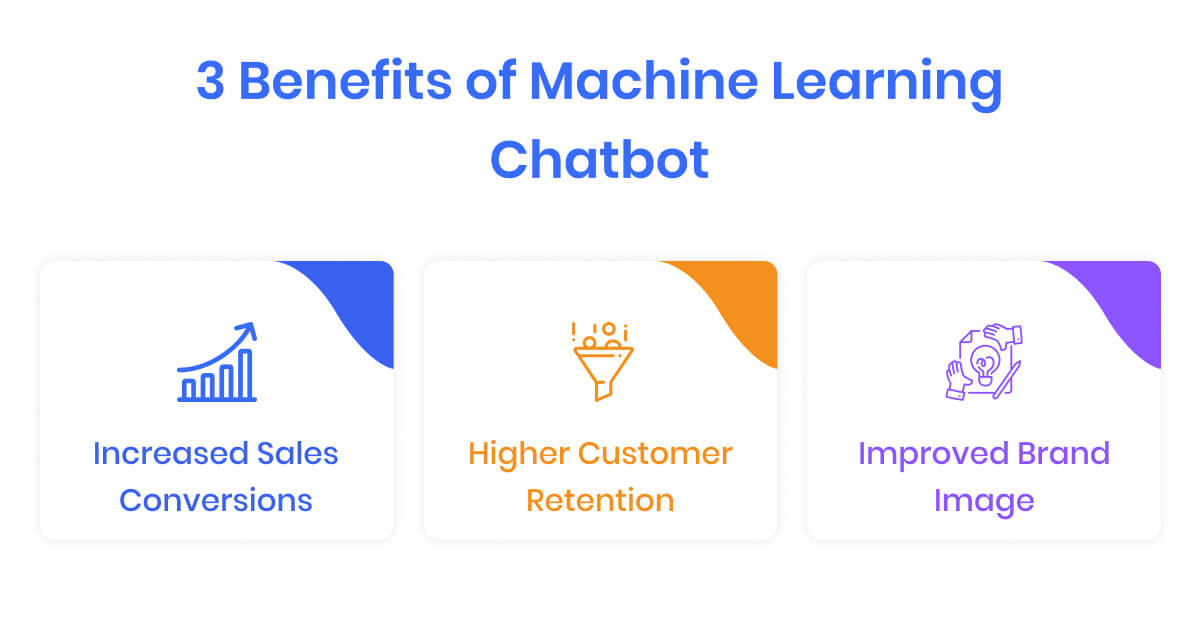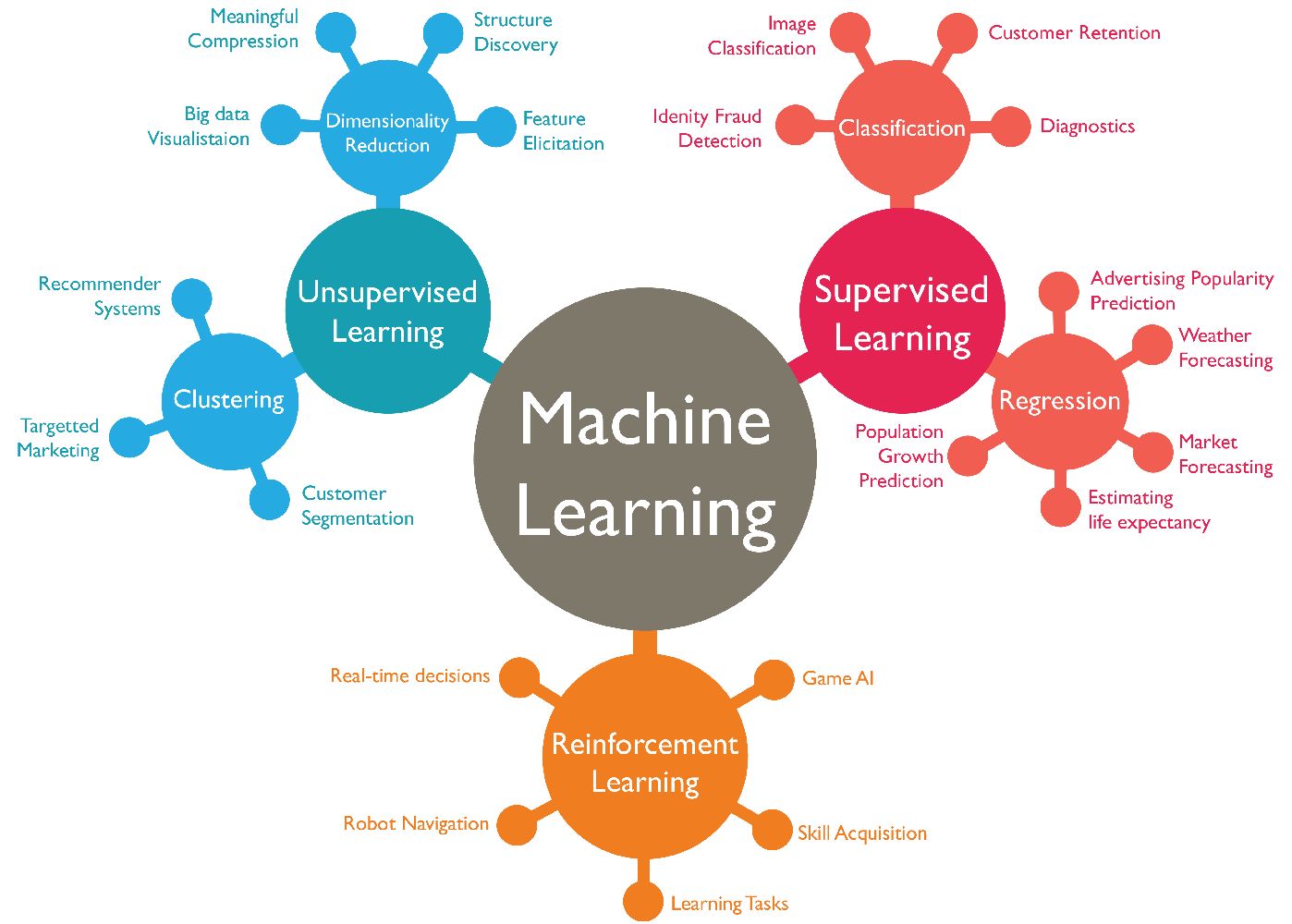Introduction
Natural Language Processing (NLP) is a subfield of machine learning that focuses on the interaction between computers and human language. It aims to enable computers to understand, interpret, and generate human language in a way that is both meaningful and contextual. NLP plays a crucial role in various applications, including speech recognition, sentiment analysis, machine translation, and text generation.
With advancements in machine learning and the availability of massive amounts of textual data, NLP has gained significant attention in recent years. It has revolutionized the way computers process and understand human language, making it possible for machines to effectively communicate and interact with humans.
One of the fundamental challenges in NLP is the ambiguity and complexity of human language. Unlike programming languages, natural language is full of nuances, variations, and context-dependent interpretations. For example, a simple sentence like “I saw a man with a telescope” can have multiple meanings depending on the context.
NLP techniques leverage various algorithms and statistical models to overcome these challenges and extract meaning from unstructured text data. These techniques involve tasks such as tokenization, syntactic parsing, part-of-speech tagging, named entity recognition, and sentiment analysis.
The importance of NLP in machine learning cannot be overstated. It allows machines to process and understand massive amounts of textual data, enabling them to extract valuable insights, make informed decisions, and automate complex tasks. NLP also facilitates human-like interactions with machines, making user interfaces more intuitive and user-friendly.
Another significant application of NLP is in the field of information retrieval and search engines. By understanding the context and intent behind a user’s query, NLP algorithms can provide more relevant and accurate search results.
Furthermore, NLP is crucial in sentiment analysis, which involves analyzing and understanding the underlying sentiment and emotions in textual data. This helps businesses gauge customer feedback, monitor brand reputation, and make data-driven decisions based on customer sentiments.
Overall, NLP plays a crucial role in bridging the gap between human language and machine understanding. By enabling machines to understand and generate natural language, NLP has transformed the way we interact with technology, making it more intelligent, intuitive, and user-friendly.
Definition of NLP in Machine Learning
Natural Language Processing (NLP) is a branch of artificial intelligence (AI) and machine learning that focuses on the interaction between computers and human language. It involves developing algorithms and models that enable machines to understand, interpret, and generate natural language in a way that is meaningful and contextually relevant.
NLP techniques aim to extract meaning from unstructured textual data by employing various computational linguistics and statistical methods. These techniques enable machines to process and analyze human language, making it possible for them to understand the semantic and syntactic structures of sentences, identify entities, extract information, and derive insights from text-based data sources.
At its core, NLP involves several fundamental tasks. These include:
- Tokenization: Breaking down a sentence or document into individual words or tokens.
- Part-of-speech tagging: Assigning grammatical tags to each word in a sentence, such as noun, verb, adjective, etc.
- Syntactic parsing: Analyzing the grammatical structure of a sentence to understand the relationship between words.
- Named Entity Recognition (NER): Identifying and classifying named entities, such as names of people, organizations, locations, etc.
- Sentiment analysis: Determining the sentiment or emotion expressed in a sentence or text, such as positive, negative, or neutral.
NLP in machine learning involves training models and algorithms using large amounts of labeled or annotated textual data. These models rely on pattern recognition and statistical analysis to understand the nuances of human language and derive meaning from text data.
Furthermore, NLP in machine learning often relies on a subfield called Natural Language Understanding (NLU). NLU focuses on enabling machines to comprehend and interpret natural language inputs in a way that mimics human understanding. It involves going beyond basic language processing tasks to understand the intent, context, and meaning behind user queries or human-generated text.
By leveraging NLP techniques in machine learning, developers and researchers can build applications with advanced language processing capabilities. These applications can range from chatbots and virtual assistants that provide interactive and human-like responses to machine translation systems that can automatically translate text from one language to another.
Overall, NLP in machine learning aims to bridge the gap between human language and machine understanding. It enables machines to effectively process, analyze, and generate natural language, leading to a wide range of applications that enhance communication, knowledge extraction, and decision-making processes.
Importance of NLP in Machine Learning
Natural Language Processing (NLP) plays a pivotal role in machine learning by bridging the gap between human language and machine understanding. It enables machines to process and interpret textual data, leading to a wide range of applications and benefits. Here are some key reasons why NLP is important in machine learning:
1. Understanding and processing textual data: NLP techniques allow machines to understand and process unstructured textual data. This is crucial because much of the world’s information is in the form of text, such as articles, documents, emails, social media posts, and more. By effectively analyzing and deriving insights from text data, machines can assist in tasks such as information retrieval, data mining, and sentiment analysis.
2. Improving human-machine interactions: NLP enables machines to understand and respond to natural language inputs, making human-machine interactions more intuitive and user-friendly. It powers virtual assistants and chatbots that can respond to user queries, provide information, and even perform tasks based on natural language commands. This improves user experiences and enables seamless communication between humans and machines.
3. Enabling language-based applications: NLP in machine learning enables various language-based applications such as machine translation, text summarization, text generation, and speech recognition. These applications have transformed how we communicate, work, and access information. They facilitate efficient communication across different languages, enable automated content creation, and provide powerful tools for content analysis and transcription.
4. Enhancing search engine effectiveness: NLP techniques enhance the effectiveness of search engines by understanding the intent and context behind user queries. This allows search engines to provide more accurate and relevant search results. NLP-powered search engines can also understand the meaning of queries beyond just matching keywords, enabling users to find the information they need more efficiently.
5. Extracting insights from sentiment analysis: Sentiment analysis, a branch of NLP, enables machines to understand and analyze the sentiment or emotion expressed in text data. This is valuable for businesses as it provides insights into customer opinions, feedback, and sentiments. By analyzing sentiment, businesses can make data-driven decisions, monitor brand perception, and effectively manage customer relationships.
6. Automating complex language-related tasks: NLP in machine learning automates complex language-related tasks that would otherwise require extensive manual effort. This includes tasks such as language translation, document classification, information extraction, and text summarization. By automating these tasks, NLP saves time and resources, enabling organizations to process and analyze large volumes of text data efficiently.
7. Enabling accessibility: NLP plays a critical role in making technology more accessible to individuals with disabilities. For example, NLP powers speech recognition systems that enable individuals with hearing impairments to interact with technology through voice commands. It also facilitates the development of assistive technologies that assist individuals with visual impairments in consuming and interacting with digital content.
Overall, NLP in machine learning is essential for enabling machines to understand, process, and generate human language. Its wide range of applications improves user experiences, enhances communication, automates tasks, and provides valuable insights from textual data, ultimately driving innovation and efficiency in various industries.
Techniques used in NLP
Natural Language Processing (NLP) relies on a variety of techniques and algorithms to process and understand human language. These techniques play a crucial role in enabling machines to analyze and derive meaning from textual data. Here are some commonly used techniques in NLP:
1. Tokenization: Tokenization is the process of breaking down a sentence or document into individual words or tokens. It is the first step in many NLP tasks and forms the foundation for further analysis and processing. Tokenization helps in segmenting the text and preparing it for tasks such as part-of-speech tagging, named entity recognition, and sentiment analysis.
2. Part-of-Speech (POS) Tagging: POS tagging involves assigning grammatical tags to each word in a sentence to identify its part of speech, such as noun, verb, adjective, etc. POS tagging helps in understanding the syntactic structure and grammatical relationships within a sentence. It is useful in tasks such as text comprehension, syntactic parsing, and machine translation.
3. Named Entity Recognition (NER): NER identifies and classifies named entities in text, such as names of people, organizations, locations, dates, etc. It helps in extracting meaningful information and identifying important entities within a document. NER is widely used in information extraction, question answering systems, and text summarization.
4. Syntactic Parsing: Syntactic parsing involves analyzing the grammatical structure of a sentence to understand the relationship between words. It helps in extracting the hierarchical structure of a sentence and identifying the syntactic roles of words. Syntactic parsing is crucial in tasks such as text generation, machine translation, and sentiment analysis.
5. Sentiment Analysis: Sentiment analysis, also known as opinion mining, is the process of determining the sentiment or emotion expressed in a piece of text. It involves classifying text as positive, negative, or neutral based on the underlying sentiment. Sentiment analysis helps in analyzing customer feedback, monitoring brand reputation, and making informed decisions based on public sentiment.
6. Word Embeddings: Word embeddings represent words as dense vectors in a continuous space, capturing their semantic similarities. Techniques like Word2Vec and GloVe are used to build word embeddings. Word embeddings have revolutionized NLP by enabling machines to understand the semantic relationships between words, perform word similarity comparisons, and improve the performance of various NLP tasks.
7. Machine Translation: Machine translation is the task of automatically translating text from one language to another. Statistical models like phrase-based machine translation and neural-based models using recurrent neural networks or transformers are commonly used for machine translation. These models rely on parallel corpora and NLP techniques to generate accurate translations.
8. Text Summarization: Text summarization involves generating concise summaries of larger text documents. Extractive summarization techniques select and piece together important sentences from the original text, while abstractive summarization techniques generate new sentences to convey the main ideas. Text summarization is useful in applications like news summarization, document summarization, and chatbot responses.
9. Speech Recognition: Speech recognition converts spoken language into written text. It involves acoustic modeling to convert audio signals into phonetic representations, followed by language modeling and decoding to transcribe the spoken words. Speech recognition techniques contribute to applications like voice assistants, transcription services, and voice-controlled systems.
NLP techniques continue to evolve, with advancements in deep learning, transformer models, and pre-trained language models like BERT and GPT. These techniques have greatly improved the performance and accuracy of various NLP tasks, making it possible for machines to understand and process human language more effectively.
Applications of NLP in Machine Learning
Natural Language Processing (NLP) has enabled machines to understand, process, and generate human language, leading to a wide range of applications across various industries. Here are some notable applications of NLP in machine learning:
1. Text Classification: NLP techniques are used in classifying text documents into predefined categories or classes. This is valuable in applications such as spam detection, sentiment analysis, topic categorization, and document classification. Text classification enables automated organization and retrieval of textual data.
2. Machine Translation: NLP powers machine translation systems that automatically translate text from one language to another. These systems utilize parallel corpora and statistical or neural-based models to accurately translate text. Machine translation has facilitated seamless communication across different languages, promoting global collaborations and removing language barriers.
3. Information Extraction: NLP enables the extraction of structured information from unstructured text data. Named Entity Recognition (NER) techniques identify and classify entities like names of people, organizations, locations, dates, and more. This information extraction plays a crucial role in applications like news aggregation, knowledge base creation, and data mining.
4. Question Answering Systems: NLP techniques power question answering systems that aim to understand natural language questions and provide relevant answers. These systems utilize various NLP tasks such as text comprehension, information retrieval, and semantic understanding to provide accurate and contextually appropriate answers.
5. Sentiment Analysis: Sentiment analysis, a branch of NLP, helps analyze the sentiment or emotion expressed in text data. It allows businesses to gauge customer feedback, monitor brand reputation, and make data-driven decisions based on sentiment insights. Sentiment analysis is widely used in social media monitoring, customer service analytics, and market research.
6. Chatbots and Virtual Assistants: NLP is integral to the development of chatbots and virtual assistants that can understand and respond to natural language queries. These conversational agents utilize NLP techniques like intent recognition, dialogue management, and natural language generation to provide interactive and human-like responses. Chatbots are used for customer support, personal assistants, and information retrieval.
7. Text Summarization: NLP techniques enable the automatic generation of concise summaries from larger text documents. Text summarization is useful in applications like news summarization, document summarization, and automatic content generation. It helps users extract key information from lengthy documents and saves time in information processing.
8. Speech Recognition: NLP powers speech recognition systems that convert spoken language into written text. These systems utilize acoustic modeling, language modeling, and decoding techniques to transcribe speech accurately. Speech recognition is used in virtual assistants, voice-controlled systems, transcription services, and language learning applications.
9. Information Retrieval and Search Engines: NLP techniques improve the effectiveness of search engines by understanding the intent and context behind user queries. Search engines employ NLP algorithms to provide more accurate and relevant search results. NLP also contributes to features like auto-complete suggestions, spell correction, and semantic search.
NLP continues to advance with the advent of deep learning and transformer models. Pre-trained language models like BERT and GPT have significantly improved the performance of various NLP tasks. As NLP technology continues to evolve, we can expect even more innovative applications in the future, revolutionizing the way we interact with technology and process textual data.
Challenges in NLP
While Natural Language Processing (NLP) has made significant advancements in machine learning, there are still several challenges that researchers and developers face. These challenges arise from the complexity and ambiguity of human language. Here are some key challenges in NLP:
1. Ambiguity: Human language is inherently ambiguous, and words or phrases can have multiple meanings depending on the context. Resolving ambiguity is a challenging task in NLP, as it requires understanding the context and disambiguating words or phrases based on the surrounding text. Ambiguity poses challenges in tasks like machine translation, sentiment analysis, and question answering.
2. Contextual Understanding: Understanding the context in which a word or phrase is used is crucial for accurate language processing. NLP models need to capture the contextual information to correctly analyze and interpret sentences. This challenge becomes prominent in tasks like named entity recognition, where the meaning of an entity depends on the surrounding words.
3. Out-of-vocabulary Words: NLP models often struggle with words that are outside their training vocabulary. Out-of-vocabulary words can lead to inaccurate or incomplete analysis of text data. Handling rare or unseen words is a challenge in tasks like text classification, sentiment analysis, and machine translation, where model performance is heavily reliant on the quality and coverage of vocabulary.
4. Idiomatic Expressions and Slang: Idioms, slang, and colloquial expressions are prevalent in human language but can be difficult for NLP models to understand and process. These linguistic nuances often require additional contextual understanding beyond the literal meaning of words. Handling idiomatic expressions and slang is a challenge in tasks like sentiment analysis, where the sentiment may not be directly reflected by the individual words used in the expression.
5. Data Sparsity: In some NLP tasks, such as named entity recognition and sentiment analysis, labeled or annotated training data may be limited or scarce. Data sparsity poses challenges in building robust models, as there may not be enough data for effective training and generalization. Techniques like transfer learning and data augmentation can help address data sparsity issues.
6. Multilingual and Cross-lingual Processing: NLP faces challenges in processing multiple languages and handling the differences in grammar, syntax, and semantics across different languages. Multilingual and cross-lingual processing requires specialized techniques for tasks like machine translation, sentiment analysis, and information retrieval. Overcoming language barriers and achieving accurate language processing in multilingual scenarios is an ongoing challenge.
7. Bias and Fairness: NLP models can be biased due to the biases present in the training data. Biased models can perpetuate stereotypes and inequalities in automated decision-making systems. Ensuring fairness and mitigating biases in NLP models is a challenge that requires careful data curation, bias detection, and model evaluation techniques.
8. Creativity and Contextual Generation: Generating creative and contextually appropriate text is a challenge in NLP. Producing text that mimics human-like responses, understands humor, and maintains coherence throughout longer texts is an ongoing research challenge. Contextual dialogue generation and text summarization are areas where generating accurate and contextually relevant responses still pose significant challenges.
Addressing these challenges in NLP requires continued research and development of innovative techniques. Overcoming these hurdles will contribute to the advancement of human-like language understanding, enabling machines to interact with humans more effectively and process textual data with greater accuracy.
Future of NLP in Machine Learning
The future of Natural Language Processing (NLP) in machine learning is promising, with ongoing developments and advancements paving the way for exciting possibilities. Here are some key aspects that represent the future of NLP:
1. Advanced Language Models: Pre-trained language models have shown incredible potential in NLP. Models like BERT, GPT-3, and T5 have achieved remarkable results in tasks such as question answering, text generation, and sentiment analysis. The future will witness the development of more sophisticated and efficient language models that can understand and generate language even more accurately and naturally.
2. Multimodal NLP: NLP is expanding beyond text-based data to incorporate other modalities, such as images, videos, and audio. Multimodal NLP aims to develop models that can understand and interpret language in combination with visual and auditory signals. This opens up possibilities for applications like image captioning, video summarization, and audio transcription.
3. Contextual Understanding: NLP models will continue to improve in their ability to understand and interpret context. Advancements in contextual understanding will enable machines to grasp the nuances of language, disambiguate meaning, and provide more accurate and contextually relevant responses. This will enhance the quality and effectiveness of AI-powered chatbots, virtual assistants, and customer service systems.
4. Cross-lingual NLP: The ability to process and understand multiple languages will become more robust and effortless. Cross-lingual NLP models will advance, enabling seamless language translation, sentiment analysis, and information retrieval across diverse languages. Language barriers will be further broken down, fostering global communication and collaborations.
5. Ethical and Fair NLP: As awareness of biases and fairness in AI systems grows, the future of NLP will prioritize ethical considerations. Efforts will focus on developing fair, transparent, and accountable NLP models that mitigate biases, respect user privacy, and ensure inclusivity. Guidelines and frameworks will be established to promote responsible NLP practices.
6. Conversational AI: NLP will drive the evolution of conversational AI systems, enabling more natural and human-like interactions. Conversational agents will be capable of engaging in meaningful and contextually relevant conversations, exhibiting empathy and understanding. They will seamlessly switch between languages and integrate multiple sources of information to provide dynamic and personalized assistance.
7. Real-time Language Processing: The future of NLP will involve faster and more efficient real-time language processing. NLP models will be optimized for quick and accurate analysis of large volumes of text data, making real-time applications like social media monitoring, fraud detection, and live language translation more effective and responsive.
8. Continuous Learning: NLP models will become adept at continuous learning, allowing them to adapt and evolve in response to new data and changing linguistic patterns. This will enhance their ability to handle emerging language trends, new vocabulary, and evolving contexts. Continuous learning will enable NLP models to stay up-to-date and maintain high performance over time.
The future of NLP in machine learning is dynamic and full of possibilities. As research and development continue to progress, we can expect smarter, more human-like language processing systems that pave the way for enhanced communication, intelligent information retrieval, and innovative applications in various fields.
Conclusion
Natural Language Processing (NLP) has revolutionized the field of machine learning by enabling machines to understand, interpret, and generate human language. NLP techniques have significantly advanced the capabilities of AI systems, enhancing communication, improving user experiences, and unlocking valuable insights from textual data.
Through techniques like tokenization, part-of-speech tagging, named entity recognition, and sentiment analysis, NLP has made it possible for machines to process and analyze large volumes of unstructured text data. This has led to a wide array of applications, including text classification, machine translation, question answering systems, sentiment analysis, and chatbots.
Despite the progress made, challenges persist in NLP, such as handling language ambiguity, context understanding, data sparsity, and bias. However, ongoing research and development in the field hold great promise for overcoming these challenges and further advancing the capabilities of NLP.
The future of NLP in machine learning is bright. It involves the development of advanced language models, exploring multimodal NLP, improving contextual understanding, ensuring ethical and fair NLP practices, advancing conversational AI, enabling real-time language processing, and facilitating continuous learning in NLP models.
These future advancements in NLP will lead to more sophisticated and accurate language processing systems. Machines will be able to comprehend human language in a more nuanced and context-aware manner, enabling more natural and effective human-machine interactions. Cross-lingual NLP capabilities will bridge language barriers, fostering global collaborations and communication.
In conclusion, NLP in machine learning has had a profound impact on various industries, revolutionizing how we interact with technology and process textual data. With ongoing advancements, NLP holds great potential for further empowering machines with the ability to understand, interpret, and generate human language, leading to more intelligent, efficient, and user-friendly AI systems.







